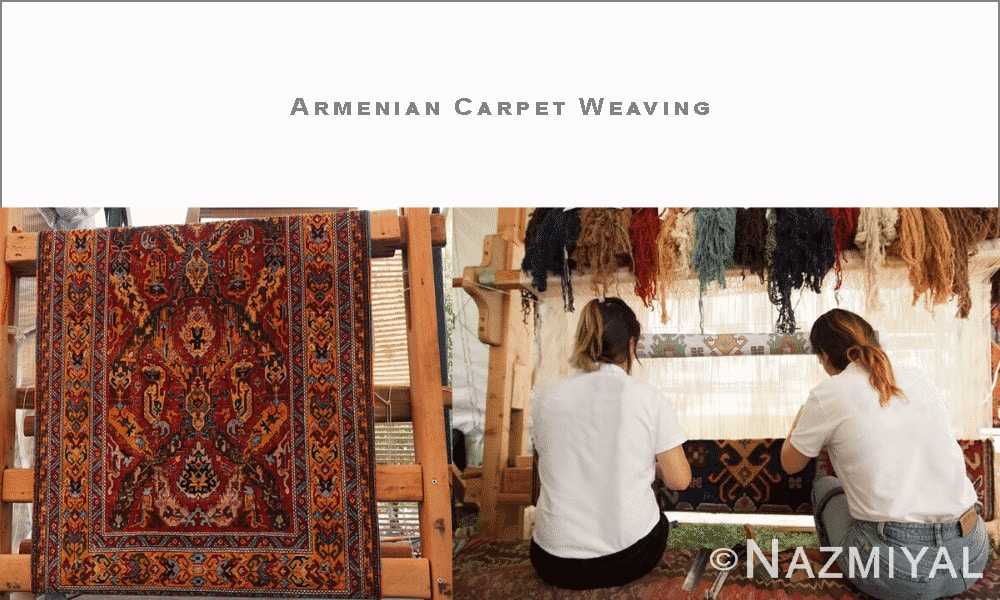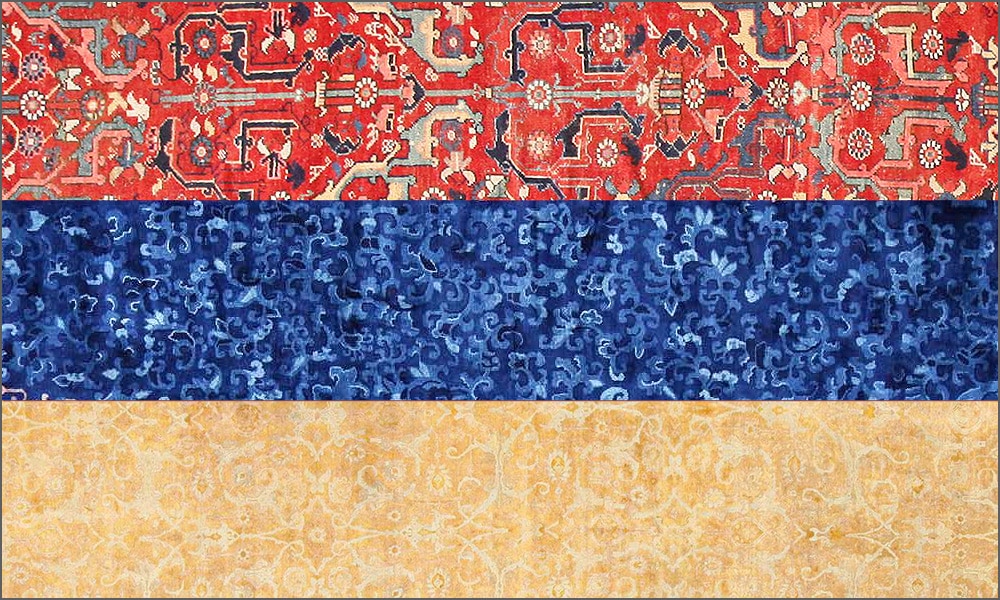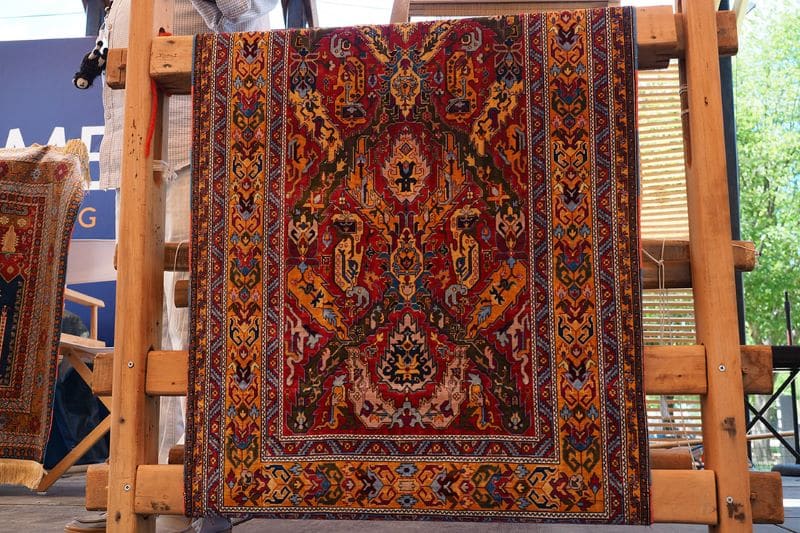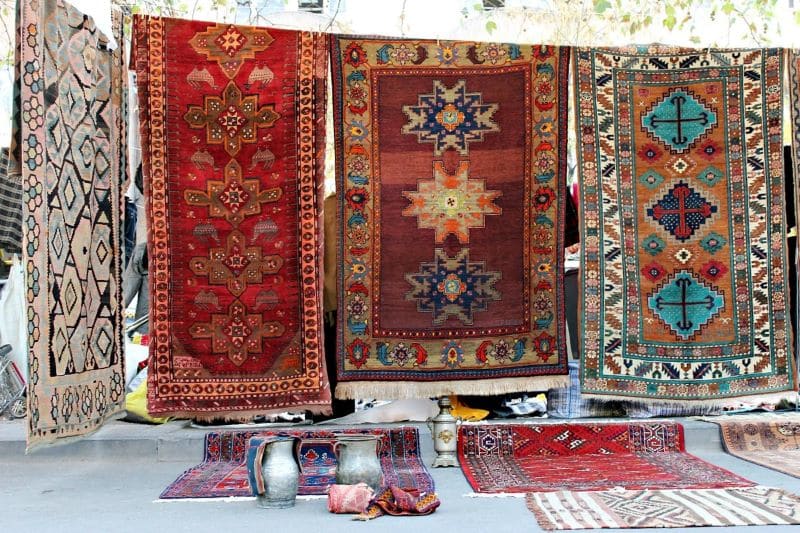The History of Armenian Carpet Making
What Are Armenian Rugs?
Armenian rugs, also known as Armenian carpets, are traditional handmade carpets and rugs produced in the historical region of Armenia, which includes present-day Armenia as well as parts of Turkey, Iran, and Azerbaijan. Armenian rugs have a rich history and are renowned for their artistic beauty and craftsmanship.
Armenian rugs have been woven by Armenian weavers for centuries, and the tradition of carpet weaving in the region dates back to ancient times. The art of weaving area rugs has been passed down through generations, and it continues to be an important cultural practice in Armenian communities.
Armenian rugs are known for their distinctive designs, patterns, and colors. They often feature geometric motifs, floral elements, and animal figures, as well as intricate borders and medallions. The color palette of Armenian rugs is typically rich and vibrant, with red, blue, green, and gold being common hues.
The techniques used in weaving Armenian rugs vary, but the most prevalent method is known as the double-knot technique, also called the Armenian rug knot or Ghiordes rug knot. This technique involves tying the wool or silk fibers around two warp threads to create a secure and durable rug.

Armenian Carpet Making History
The Armenian antique rugs have gained international recognition for their fine high quality weaves and artistic value. They have been sought after by collectors and art enthusiasts worldwide. The Armenian rug-making tradition has faced challenges and disruptions throughout history, including during periods of political turmoil and mass migrations. However, efforts have been made to preserve this traditional craft, and Armenian weavers continue to produce exquisite area rugs that showcase their rich cultural heritage.
More about the Armenian rug
As noted above, Armenian rugs are a traditional form of textile art that originated in Armenia and the surrounding regions. These rugs have a long history dating back over a thousand years and are known for their intricate designs, vibrant colors, and high craftsmanship.
Here are some key features and information about Armenian rugs:
- Historical Significance: Armenian rugs have a rich historical and cultural significance. They are believed to have been woven as early as the 5th century AD and have played an important role in Armenian culture and heritage.
- Geographic Origin: Armenian rugs were traditionally woven in the historical region of Armenia, which encompassed parts of present-day Armenia, Turkey, Iran, and Azerbaijan. These rugs are also associated with the Armenian diaspora communities around the world.
- Weaving Techniques: Armenian rugs are typically handwoven using traditional techniques passed down through generations. The most common technique used is the “knotting” or “pile” method, where individual knots are tied to create the rug’s pattern and texture. Flatweave techniques, such as the “kilim” style, are also used in Armenian rug-making.
- Designs and Patterns: Armenian rugs are known for their intricate and diverse designs. These designs often include geometric patterns, floral motifs, animal figures, and historical or religious symbols. The use of bold and vibrant colors is a hallmark of Armenian rug design.
- Symbolism: Armenian rugs often feature symbolic elements that reflect the culture and history of the Armenian people. Some rugs may incorporate Christian crosses, ancient Armenian script, or other culturally significant symbols.
- Uses: Armenian rugs were traditionally used for various purposes, including as floor coverings, wall hangings, and prayer rugs. They were also valuable trade items and were often given as gifts or used in religious and ceremonial settings.
- Regional Variations: Different regions within historical Armenia and its neighboring areas developed their own distinctive styles of rugs. These regional variations in design and technique have contributed to the diversity of Armenian rugs.
- Preservation and Collectability: Armenian rugs are highly valued by collectors and art enthusiasts for their historical and artistic significance. Efforts have been made to preserve and document these rugs, especially as they have become more scarce due to factors such as conflict, displacement, and migration.
- Contemporary Production: While traditional Armenian rug-making techniques continue to be practiced by some artisans, modern production methods and materials have also been adopted. Contemporary Armenian rugs often blend traditional motifs with contemporary designs, catering to a broader market.
Armenian rugs serve as a testament to the rich cultural heritage of Armenia and its people, and they continue to be appreciated for their beauty and historical importance today.
The Captivating Beauty And History Of Armenian Rugs and Carpets
The beauty of Greek and Armenian carpets was so notable that even explorer Marco Polo referred to them in his writing. His travels through Armenia in the 13th century led to an account of the talents of the Greeks and Armenians who he described as ” living in cities and in permanent settlements and earning their livelihood from commerce and trade.” He stated that these locations were where they made “the best and most beautiful carpets“. His description stood out, as the traveler only listed three classes of people in Armenia. The third class (the Turkomans) he described much less favorably, choosing to call them crude and uneducated and living in virtually inaccessible places.
Polo was obviously a man who spoke plainly and chose not to hide his opinion when sharing his experiences with his audience. The description of the quality of carpets available in the country at the time clarifies that many Armenians were already skilled carpet makers. The people of this area had centuries of experience in the trade, and by the time Polo noticed their skills, great changes had already begun. The changes in Armenia would lead to these talented people sharing their skills in many other areas of the world.

Armenian Rugs
Ancient Armenians had begun the art of rug weaving as early as 1,000 BC. Excavations throughout Armenia have revealed carpet fragments from the 7th century BC and before. The oldest surviving complete Armenian carpet, made between the 5th and 3rd BC, is on display at the Hermitage Museum in St. Petersburg, Russia. Others have tried to claim the beautiful artwork as their own, but most experts believe the credit goes to Armenian rug makers for the unique funeral accessory.
Records of the fine carpets covering walls and churches in Armenia come from the 5th century, as do multiple written records of the use of the carpets as payments for taxes, valuable booty, and much more. The carpets were not the average area rug or floor mat but were enormous commercial pieces often reaching as much as 600 square feet in size. Prayer rugs used by Arabs were often Armenian-crafted rugs despite the history of talented Oriental carpet makers within the Islamic world.

An Armenian carpet hanging on a loom.
The Armenian Carpet and the History of the Armenian People
As Armenians fled their homeland in the 13th century because of the fall of parts of Turkey to Egyptian Mamluks, their dominance in carpet making began to slide. Suddenly, beautiful carpets began to appear in places like Poland, Iran, Crimea, and Transylvania. These same areas were where many Armenian refugees took shelter. Obviously, the new residents shared their weaving secrets with their neighbors.
It is again Armenians who deserve the credit for the development of many of the most desirable carpets in the world. Persian carpets, India’s Mughal carpets, and Polonaise carpets in Poland were all the direct result of the influence of skilled Armenian rug makers. Shah Abbas of Persia sent 100,000 Armenians to new homes in New Julfa, located outside of Isfahan, Iran. The transplants received silk and trade outposts in India to help build a thriving market for the Persian leader. Suddenly, cultures throughout the area where the Armenians settled started to produce incredible carpets that included many Armenian traits.
A loss of much of the history and talent for rug making occurred during the Armenian Genocide of 1915. The Turks killed between 600,000 and 1.5 million Armenians and forced deportation of many others. Despite the constant struggles and repeated loss of their common home, the strong people continued to follow their customs and retain their skills. Soviet control also sought to wipe out the tradition of carpet making in Armenian populations. Conformity and control as per traditional Soviet orders resulted in bland carpets manufactured and sold throughout the area. However, Soviet control is only a memory as Armenians finally have their freedom again.
The return of freedom has brought back all that made the carpets so spectacular from the beginning. The newly produced carpets have the same quality material, the vibrant colors treasured in past carpets, and the weaving techniques once thought forgotten. The Soviets may have banned the public sale and display of the rugs, but that did not stop Armenians from passing down their skills to their children within their own homes.

Armenian carpets at the Vernisage market in Yerevan.
The Armenian Carpet Today
Modern consumers often appreciate Armenian carpets without realizing who the makers were. The textile art from the Caucasus and northwestern Iran, the Nagorno Karabagh-made floral designs prized by Russian aristocrats, and many others were all influenced by the clusters of Armenian settlers in the lands where people manufactured the carpets. However, production facilities in Armenia are drawing attention to the history of the Armenian carpet making tradition. New manufacturing facilities within Armenia include talented carpet makers, flocks of sheep for quality control over the material, and much more. The facilities have made it possible for the world to finally experience a true Armenian creation. Currently, more than 10,000 square feet of Armenian carpets arrive on the marketplace for Western buyers, as over 1,000 locals can now support their families with their ancient craft.
The Armenians spent centuries either forced away from their homeland or kept under complete control. Rarely were Armenians given credit for the skills they shared with others. Finally, the strong and talented weavers will have the chance to rewrite history and prove their dominance in carpet making.

Sisters in modern day Armenia keep the carpet weaving tradition alive.
This rug blog about the history of the Armenian carpet was published by Nazmiyal Rugs.



